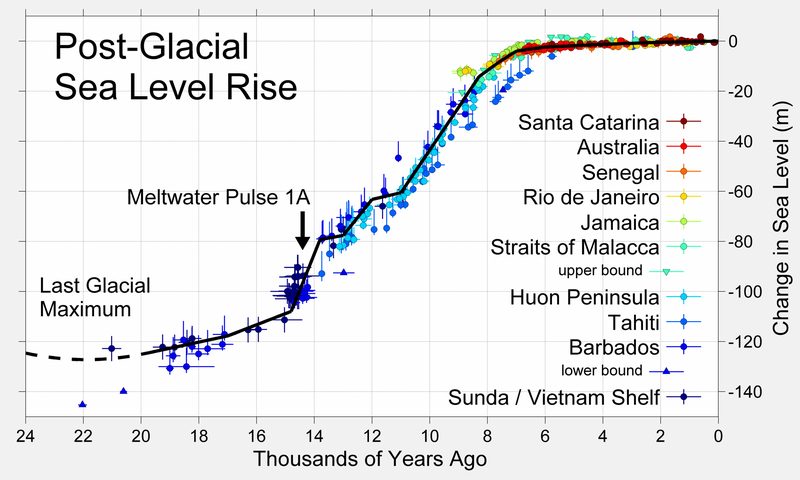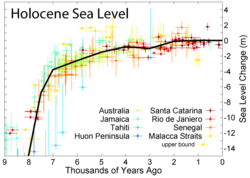پرونده:Post-Glacial Sea Level.png - ویکیپدیا، دانشنامهٔ آزاد

اندازهٔ این پیشنمایش: ۸۰۰ × ۴۸۰ پیکسل. کیفیتهای دیگر: ۳۲۰ × ۱۹۲ پیکسل | ۱٬۰۲۴ × ۶۱۵ پیکسل | ۱٬۲۸۰ × ۷۶۸ پیکسل | ۱٬۸۱۳ × ۱٬۰۸۸ پیکسل.
پروندهٔ اصلی (۱٬۸۱۳ × ۱٬۰۸۸ پیکسل، اندازهٔ پرونده: ۳۷۱ کیلوبایت، نوع MIME پرونده: image/png)
تاریخچهٔ پرونده
روی تاریخ/زمانها کلیک کنید تا نسخهٔ مربوط به آن هنگام را ببینید.
| تاریخ/زمان | بندانگشتی | ابعاد | کاربر | توضیح | |
|---|---|---|---|---|---|
| کنونی | ۱۸ مارس ۲۰۱۹، ساعت ۲۳:۳۶ |  | ۱٬۸۱۳ در ۱٬۰۸۸ (۳۷۱ کیلوبایت) | Dragons flight | Higher resolution version |
| ۲۵ نوامبر ۲۰۱۶، ساعت ۱۷:۲۶ |  | ۵۲۶ در ۳۵۹ (۱۹ کیلوبایت) | A876 | edited to correct spelling. (also OptiPNG.) | |
| ۲۷ دسامبر ۲۰۰۵، ساعت ۰۲:۲۰ |  | ۵۲۶ در ۳۵۹ (۲۳ کیلوبایت) | Angrense | Sea level variation during the last post-glacial period. Source:English version of Wikipedia. |
کاربرد پرونده
صفحههای زیر از این تصویر استفاده میکنند:
کاربرد سراسری پرونده
ویکیهای دیگر زیر از این پرونده استفاده میکنند:
- کاربرد در af.wikipedia.org
- کاربرد در ar.wikipedia.org
- کاربرد در ast.wikipedia.org
- کاربرد در beta.wikiversity.org
- کاربرد در be.wikipedia.org
- کاربرد در bg.wikipedia.org
- کاربرد در bn.wikipedia.org
- کاربرد در bo.wikipedia.org
- کاربرد در bs.wikipedia.org
- کاربرد در ca.wikipedia.org
- کاربرد در cs.wikipedia.org
- کاربرد در da.wikipedia.org
- کاربرد در da.wikibooks.org
- کاربرد در de.wikipedia.org
- Ozean
- Meeresspiegel
- Präboreal
- Atlantikum
- Subatlantikum
- Meeresspiegelanstieg seit 1850
- Schmelzwasserpuls 1A
- Flandrische Transgression
- Er Lannic
- Doggerland
- Wikipedia:Auskunft/Archiv/2010/Woche 01
- Subboreal
- Boreal (Klimastufe)
- Diskussion:Kontroverse um die globale Erwärmung/Archiv/005
- Benutzer:Zumthie/Fundstücke
- Diskussion:Storegga
- Letzteiszeitliches Maximum
- Allée couverte im Estuaire de la Quillimadec
- Passage Tomb auf Ringarogy Island
- Dolmen von Rostellan
- Allée couverte auf der Île Coalen
- Dolmen von Keroyal
نمایش استفادههای سراسری از این پرونده.


 French
French Deutsch
Deutsch

